
What to look for in a van for towing
- Toyota HiAce
- Hyundai iLoad
- Volkswagen Transporter
- Renault Trafic
- Mercedes-Benz Vito
- Ford Transit Custom
- Ford Transit Custom 2022
- Mercedes-Benz Vito 2022
- Hyundai Iload 2022
- Renault Trafic 2022
- Toyota HiAce 2022
- Volkswagen Transporter 2022
- Ford Commercial Range
- Hyundai Commercial Range
- Mercedes-Benz Commercial Range
- Renault Commercial Range
- Toyota Commercial Range
- Volkswagen Commercial Range
- Commercial
- Toyota HiAce Reviews
- Hyundai iLoad Reviews
- Volkswagen Transporter Reviews
- Renault Trafic Reviews
- Mercedes-Benz Vito Reviews
- Ford Transit Custom Reviews
- Ford
- Hyundai
- Mercedes-Benz
- Renault
- Toyota
- Volkswagen
- Adventure Advice
- Ford Advice
- Hyundai Advice
- Mercedes-Benz Advice
- Renault Advice
- Toyota Advice
- Volkswagen Advice
- Adventure
- Adventure advice
- Tradies
- Towing
- Diesel
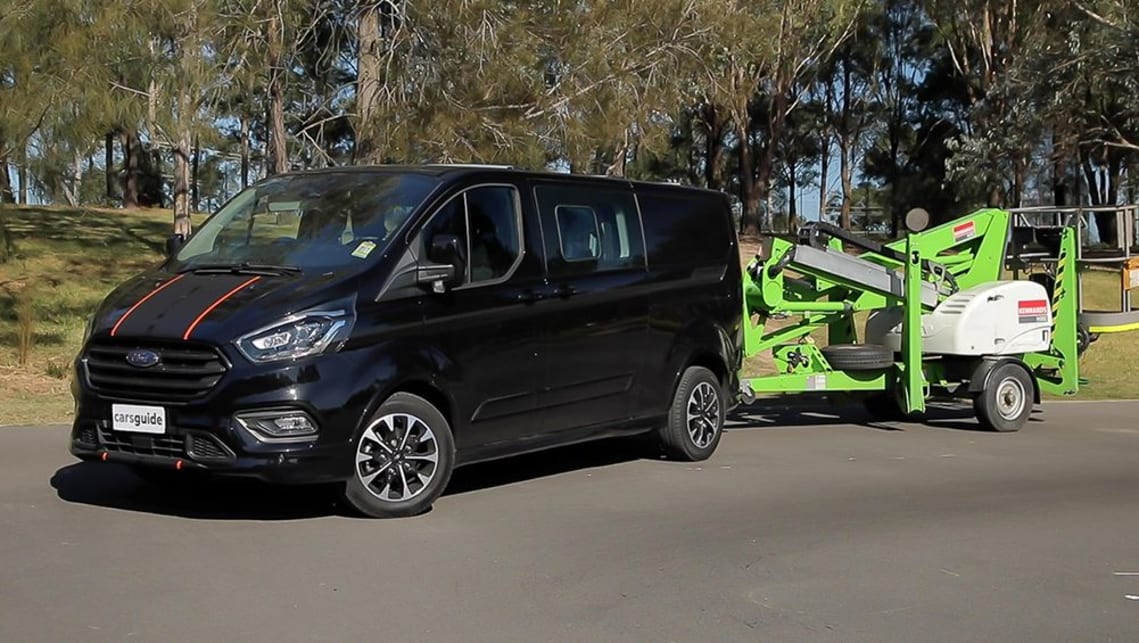
When it comes to tow-vehicles in Australia, the default setting has always been the humble ute. That began with the sedan-based utes from the local carmakers and evolved into the not-so-humble dual-cab ute that is currently taking every other type of car to the cleaners in the new car sales race.
In the USA, the scene is similar with the pick-up taking the place of the dual-cab ute, but in other parts of the world – namely Europe – the tow-car scene is very different.
In fact, the entire commercial vehicle landscape is radically different with the one- or two-box van being the default setting for just about every task we would use a ute for. So when it comes to the best van for towing Australia is not as well served as some other markets. But that doesn’t mean they aren’t out there.
Read more about vans
- Toyota HiAce 2022 review: LWB diesel auto GL Package - GVM test
- 2022 Mercedes-Benz Vito price and features: New turbo-diesel engine option detailed for updated Toyota HiAce, Hyundai Staria-Load and Ford Transit Custom rival
- 2022 Peugeot Partner, Expert and Boxer price and features: France's updated vans take aim at new Volkswagen Caddy, Transporter and Crafter
So what about towing? Can a conventional van make a decent fist of towing a boat, caravan or trailer? It can, provided you buy the right one that’s rated to a sufficient towing limit.
Though not as immediately towing-friendly as a ute with a torquey engine and all-wheel drive, the best vans for towing will do the job in a large percentage of cases and offer up some distinct advantages over a ute in the first place.
Those begin with the fact that, unlike many conventional single-cab utes, a van, even with a single front seat, will still be able to seat three people. In some cases, it might be a bit of a squeeze but when you really need to move three bodies, that won’t matter too much.
The other big advantage a van offers is security. Unlike an open or a canvas-tonneau-covered ute tray, a van has all the security of a closed car. For tradies, being able to lock tools away safely and out of sight is a huge bonus.
But even recreational users often carry around the bits and pieces that make their hobby work (skis, life-jackets, fuel drums, tools, whatever) even if they tow their boat, dirt-bike or buggy on a trailer. And being able to secure that expensive gear makes lots of sense.
And let’s not forget sheer practicality. Unlike a ute with its often short load area, the whole length of a van from the front seats back is available to cart gear. And if you buy the right one, a van is also likely to have doors at the rear as well as a sliding side door (sometimes on both sides) for great access. Some also have rear barn doors that are double jointed to open back onto the sides of the van itself, allowing for forklift access. And many will also take a standard Aussie pallet (1165mm) between the wheel-arches (most utes won’t).
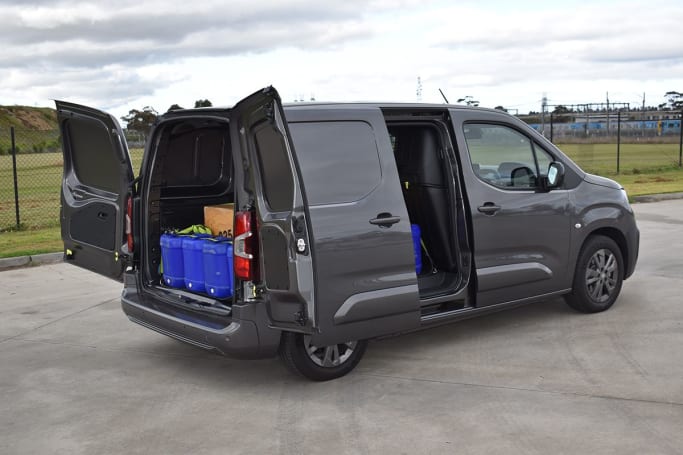
The downsides to a van are that they don’t always have the huge legal towing capacity of a dual-cab ute. That said, they’re often more than a match for a conventional ute, and many of them have towing capacities that will do the job, even if it’s not the full three-and-a-half tonnes.
Vans are also not so great to drive in some circumstances, but they are improving all the time. Each generation of vans sold here has been an improvement on driveability and, crucially, safety.
If you’re buying second-hand, the big catch with a van is that it’s possibly already led a pretty hard life. Unlike dual-cab utes which are often lifestyle purchases from new, virtually nobody buys a brand-new van unless they intend for it to earn its keep. So check out any van’s history to make sure it hasn’t already been used up.
In Australia right now, there are really three size categories of vans. The smallest ones like the Citroen Berlingo van, VW Caddy and Renault Kangoo don’t have great towing limits (sometimes less than 1000kg, often not much more than that) so the small van or minivan is not really under consideration here. Which leaves us with the popular medium sized vans which pull up short of the full sized van or long-wheelbase cargo van category that is aimed more at commercial operators.
So here’s our list of the best of them:
Ford Transit Custom – 2013 – 2022

Towing capacity: Up to 2500kg (braked)
Ford really sexed up the Transit with the Custom treatment to give it a 'sporty' aggressive look. But earlier models are also worth a look with similar mechanicals and clever cabins that show a lot of consideration by the design team.
Power is 125kW and torque 390Nm from a 2.0-litre turbo-diesel and there’s a choice of automatic or manual transmission. Some had barn doors and the floor was plastic covered with good tie-down points. Safety was well covered, too.
Price new: From $43,590
Price used: From $1800
Hyundai iLoad TQ4 – 2018 to 2022

Towing capacity: 1500kg (braked)
The above towing limit means the Hyundai is not the best van for towing a trailer if it’s a big, heavy one. But for a tinny or small travel trailer, it will do the job. Earlier versions had a petrol engine option, but it was gutless and the turbo-diesel with its 125kW and 441Nm is the ticket.
With doors on both sides and excellent tie-down points, the iLoad looks good, but the reality is the doors offer a narrow opening. At least the TQ4 offered barn-style rear doors. The interior feels pretty cheap but that engine is a ripper, if a little noisy.
Price new: From $39,680
Price used: From $30,000
Toyota HiAce - 2019 – 2022
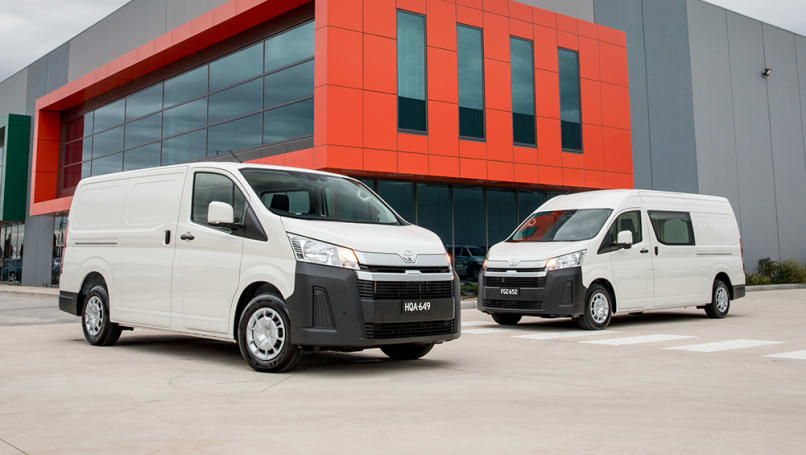
Towing capacity: 1900kg (braked)
An all-new design arrived in 2019 and not before time as the outgoing HiAce was cramped and lacked many safety features. Both those matters were addressed in 2019 and the HiAce was hugely improved in every area. As such, the 12-seat passenger van version was a much safer vehicle.
Engine choices consisted of a 2.8-litre turbo-diesel with 125kW and 420Nm or a smooth V6 petrol of 3.5 litres with 207kW and 350Nm. The short bonnet improved crash safety and twin side doors were a bonus. Retained value is strong.
Price new: From $44,650
Price used: from $41,000
Volkswagen Transporter T6 – 2015 – 2022
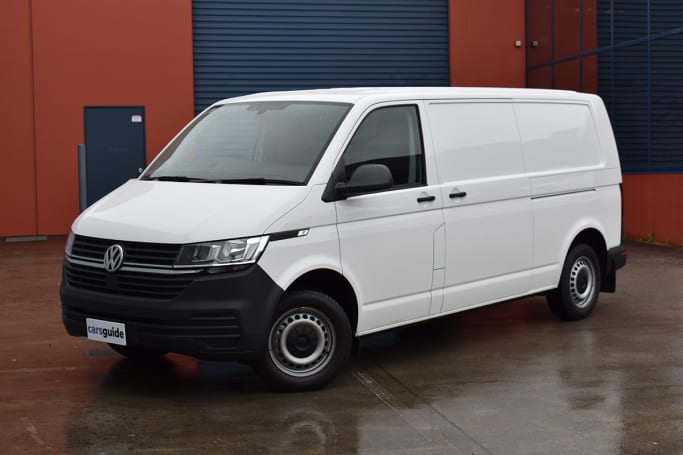
Towing capacity: 2500kg (braked)
A long-running range, the VW Transporter is available in a huge range of body and layout options with (in the current model) no less than three different states of tune for what is essentially the same engine. There’s also a choice of transmissions and the option of all-wheel drive which is great for towing.
There’s also a broad spread of price points as a result of that diversity. The towing limit is quite high for this type of vehicle, but with a single side-door and a one-piece rear door, it’s not as versatile as some. The walk-through design in some variants also makes the VW a strict two-seater.
Price new: From $41,990
Price used: From $22,000
Renault Trafic – 2015 – 2022

Towing capacity: 2000kg (braked)
It should come as no surprise that a mainstream European carmaker like Renault would be all over the urban van concept. The Trafic launched in 2015 still looks a bit space-age and despite some versions with smaller power outputs, it actually does a pretty good job.
Later versions had a more luxurious cabin look and feel and there were cupholders and storage bins all over the cabin. A pair of side doors also helped and the barn-doors at the rear actually included a wiper for each rear window. Small details, but attention to detail is important in a working vehicle.
Price new: From $37,390
Price used: From $19,000
Mercedes-Benz Vito – 2014 – 2022
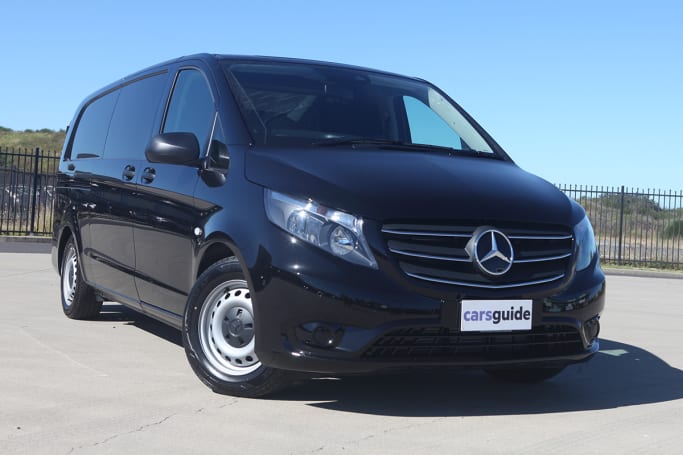
Towing capacity: 2500kg (braked)
Commercial vehicles often have a long lifespan and the Vito is no exception. Cabin ergonomics have always been a Benz thing, so it’s no surprise to find the Vito will fit a driver of just about any size comfortably. The column-mounted gear selector also frees up space for the centre passenger’s knees.
But in other areas, perhaps the concept is showing its age. Performance is adequate rather than sparkling and some of the details like the fiddly rear door latches and the jack that gobbles up load space suggest the age of the design.
Price new: From $42,900
Price used: From $24,000







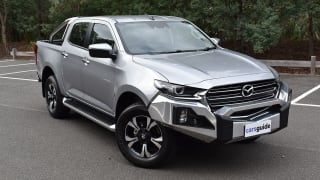

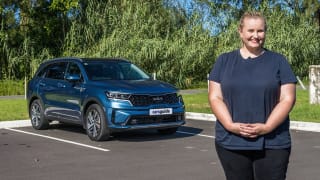
Comments